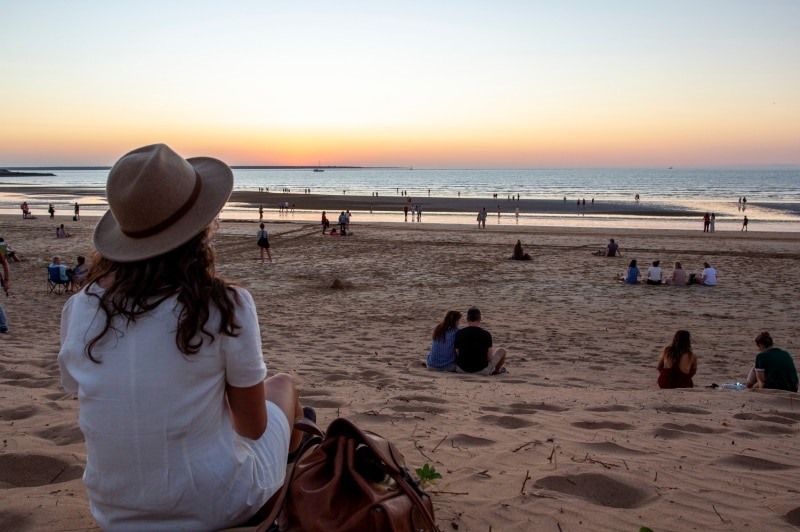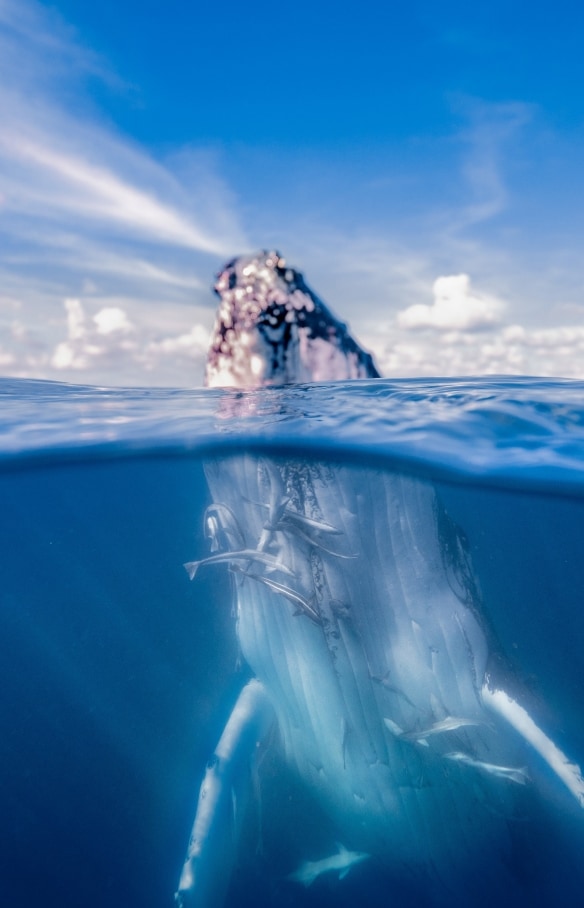
Lady Elliot Island, Great Barrier Reef, Queensland © Tourism and Events Queensland
Meet the Great Barrier Reef’s Great Eight
Discover where to encounter the Great Barrier Reef’s Great Eight marine animals.
Clownfish
Clownfish
The Great Barrier Reef is home to 1,625 fish species, with one of the more iconic being the clownfish. They’ve always been cute, but Disney Pixar’s Finding Nemo has given clownfish celebrity status among the reef’s residents. You’ll spot them when snorkelling or diving almost anywhere on the reef, but some of the best places to encounter them include Magnetic Island, Lady Musgrave Island, Green Island, the Whitsunday Islands, the Frankland Islands and Heron Island.
Giant clams
Giant clams
Dive to the depths of the Great Barrier Reef to encounter a ‘giant legend’ – and when we say giant, we mean it. These jaw-dropping species are the largest molluscs on Earth, sometimes weighing over 200kg (440lbs) and reaching four metres (13ft) in length. You can lay your eyes on their psychedelic colours anywhere along the reef, but snorkelling the Clam Gardens off Lizard Island is one of the best ways to spot them.
Manta rays
Manta rays
With a wingspan up to nine metres (30ft) and a friendly and playful character, manta rays are one of the reef’s most spectacular marine animals. Swimming with these majestic giants is an otherworldly experience that few have the opportunity to encounter. Feel their calm demeanour at Lady Elliot Island on the Southern Great Barrier Reef, a popular hangout for these glorious creatures.
Maori wrasse
Maori wrasse
Another fish to put on your bucket list is the Maori wrasse. These distinctive animals are larger than life – in size and personality. Their inquisitive nature resembles puppy-like behaviour, so don’t be surprised if this colourful giant starts following you around. The Whitsunday’s Hardy Reef is well-known for its large number of Maori wrasses. For the ultimate encounter, head to Moore Reef from Cairns with Sunlover Reef Cruises.
Potato cod
Potato cod
Named after its potato-shaped markings, the potato cod is another large resident of the Great Barrier Reef. These gigantic fish can grow up to two metres (6.5ft) long, weighing around 100kg (220lbs). Despite being on the larger side, potato cods are friendly fish and will add a whole lot of entertainment to your dive. Head to Cod Hole with either Spirit of Freedom or Mike Ball Dive Expeditions on the Ribbon Reefs for a good chance to meet one.
Turtles
Turtles
Six of the world's seven species of marine turtles live in the waters of the Great Barrier Reef. One of the best ways to spot these stunning marine animals is by exploring the fringing reef surrounding Hamilton Island on a Deep Water Turtle Discovery tour. At the Mon Repos Turtle Centre, near Bundaberg, you can witness baby turtles take their first steps (between mid-January and early February) as they hatch and scamper to the ocean.
Whales
Whales
One of the most incredible underwater experiences the Great Barrier Reef has to offer occurs every year from April to November. During this time, around 25,000 humpback whales make their way from Antarctica to the Great Barrier Reef’s Hervey Bay. It’s here, at this sheltered whale conservation area, that mums come to birth their calves. Book a day trip with Blue Dolphin Tours to see these breathtaking animals up close, or swim with their smaller (but still enormous) relatives, dwarf minke whales, with Mike Ball Dive Expeditions.






































































































































































